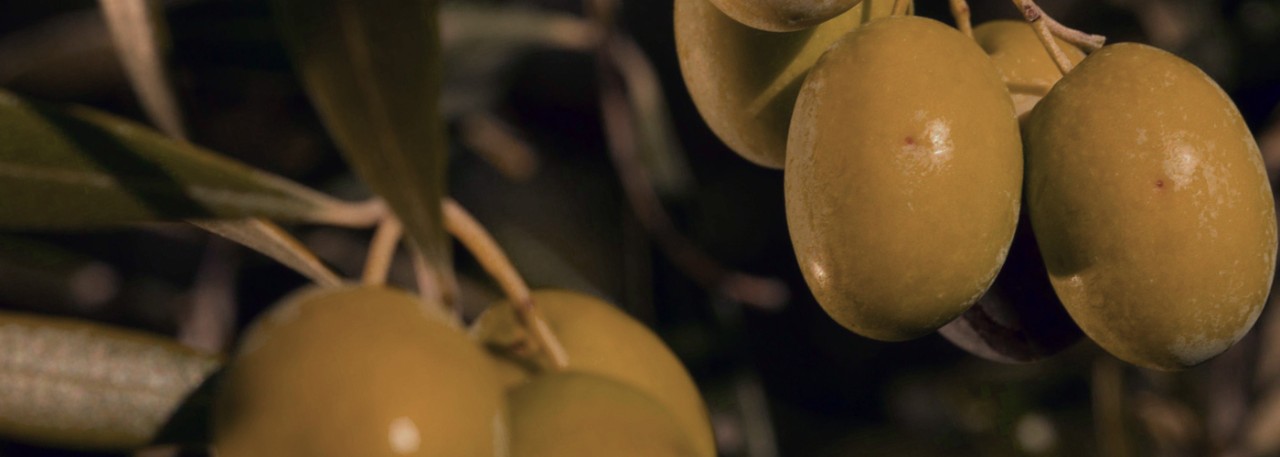.png.transform/rendition-xs/image_image%20(1).png)
Aceite de la Comunidad Valenciana PDO
Extra virgin olive oil, obtained from olives harvested from the following varieties of olive trees (Olea europea, L.) grown in the Comunitat Valenciana: Manzanilla Villalonga, Blanqueta, Farga, Serrana de Espadán, Morruda, Cornicabra, Alfafara or Grosal, Changlot Real, Rojal, Canetera, Nana, Empeltre, Cuquillo, Sollana, Callosina, Llumeta, Millarenca, Borriolenca.
Tasting notes
From an organoleptic point of view, the oil has fruity aromas of green olive and other fruits such as almonds, bananas, green grass, etc., and a very intense flavor, with medium to low bitterness and spiciness. It also has an excellent balance between flavor and the intensity of its spicy, bitter hints.
Other notes
The protected oil is extra virgin, with an acidity of less than 0.7º and a peroxide value of less than 20. The oil has a very well balanced fatty acid content, with a particularly high level of oleic acid, medium levels of linoleic acid and a high concentration of unsaturated and saturated fatty acids. The oil also has a high level of tocopherols.
Production / Processing method
The main type of olive cultivation in the Comunitat Valenciana is the traditional olive grove, with limited but extremely high quality yield.
Trees are planted out in rows, with an average plantation density of 101.7 olives trees per hectare (within an area of approximately 10 x 10 m) and of one base per tree. The trees are planted mainly on non-irrigated land and the average yield of both olives and oil per tree is very low (2 kg of oil per tree, and 10 kg of olives per tree), in line with the traditional type of low-yield olive grove.
Traditional olive farming methods are employed in a way that causes minimal agricultural impact on the environment. The main agricultural practices carried out are the following: improvements and fertilizing, tilling and working the soil, pruning, watering and pest and disease control.
The olive harvest starts when the olives are deemed to have ripened sufficiently. Harvesting is done by taking the olives straight from the tree, with the traditional system or technique of "ordeño" or hand picking being the most commonly used method. Various kinds of high-performance machines may also be used, provided they do not damage the quality of the olives.
The harvested olives are placed in plastic boxes or clean trailers and taken to the olive press that same day. The olive oil produced under this PDO "Aceite de la Comunitat Valenciana" uses only olives picked from the tree, as fruit collected from the ground is always rejected. The maximum period allowed to elapse between harvesting the olives and processing them at the plant must not exceed 48 hours.
The following factors are taken into account when the olives are processed:
- The olives are milled using the continuous method.
- The temperature at which the paste is beaten should not be too high in order to prevent the organoleptic properties of the oil from being harmed.
- Only food standard talc may be used as emulsifier.
- Separation is done mainly by centrifuge.
- The temperature of the water added at the horizontal and vertical decanting stage, if applicable, must never exceed 36ºC.
- Natural decanting depends on the level of impurities the oil contains.
The oil must be stored in completely sealed tanks, which may be either stainless steel or other materials. The storage tanks must be able to guarantee that product quality is maintained for at least one year.
Packaging is done only in packaging plants recorded in the appropriate register and based within the geographical production area, in order to preserve the distinctive features of the product at all stages of the process.
Geography / Relief and climate
The Valencia landscape can be described as being a mountainous facade opening out to the sea. The relief consists of predominantly mountainous areas with plains and valleys in between, stretching down towards the coast. The most common surface rock is limestone, although outcrops of sandstone, marl and karst can be found in some places. Generally speaking, the lower layers are mainly Mesozoic, composed basically of limestone rock (mixed with some marl and sandstone) from the Cretaceous and Jurassic periods. Sedimentary materials from more recent periods make up the soil in the cultivation area, and are composed mainly of materials from the Tertiary and Quaternary periods, giving the olive trees their distinctive features and properties.
The Comunitat Valenciana has a typically Mediterranean climate, characterized by mild winters, low rainfall, with the greatest amounts in autumn and spring, and summer droughts. The influence of the Mediterranean Sea, the peninsular land mass and Atlantic currents make for Valencia's typically even climate, giving the olive trees a set of unique features. The differences in geographical relief draw a natural dividing line between the coastal climate from the climate further inland. Average rainfall is between 500 and 600 mm per year.
Average temperatures over the year in the olive producing areas are between 12 and 16ºC, with major variations between winter (averaging between 6 and 10ºC) and summer (higher averages of between 22 and 26ºC).
Olive trees are grown primarily on land in the mid-region of the Comunitat Valenciana, giving them a series of distinctive properties. The major temperature variations between winter and summer favor the increase of particular quality parameters. The concentration of rainfall in autumn and spring is hugely beneficial for olive tree cultivation and for the quality of the oils produced.
Regulatory Council
Association for the Promotion of the "Aceite de la Comunitat Valenciana" PDO
C/ Sagunto, 39 Bajo
12400 Segorbe (Castellón)
Tel: + 34 964 71 38 12
info@aceitevalencia.com
http://www.aceitevalencia.com
Sources:
- Spanish Ministry of Agriculture
The oil has a particularly high level of oleic acid, medium levels of linoleic acid and a high concentration of unsaturated and saturated fatty acids.


- Aceite de la Comunidad Valenciana 1
- Aceite de la Comunidad Valenciana 2

Segorbe (Valencian Community)
